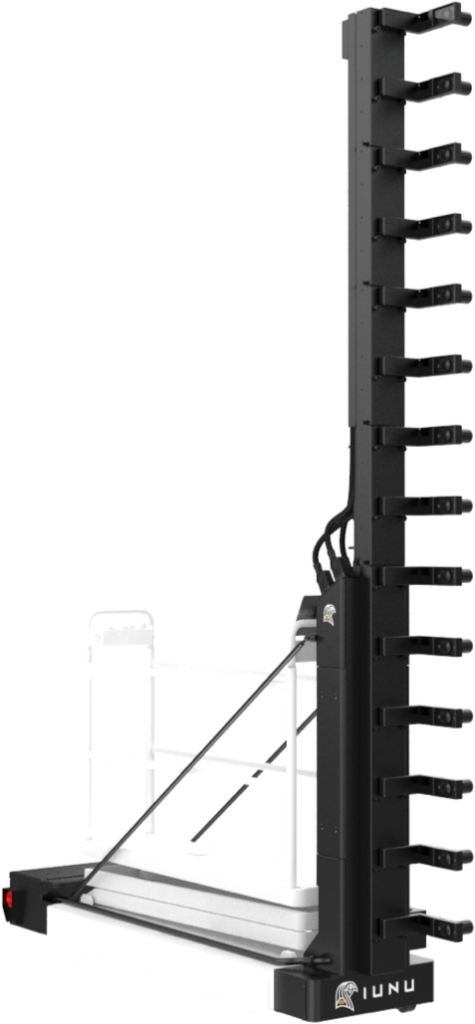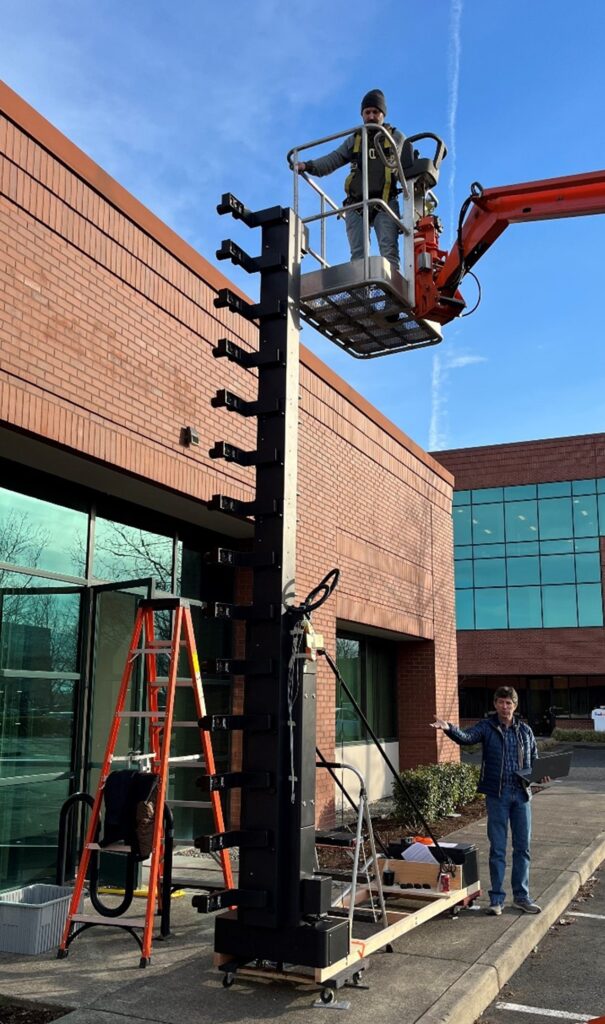CASE STUDY: IUNU ROBOTIC VINE PLANT MONITOR
Autonomous Growing Robotic Solutions, Harnessing the Power of Artificial Intelligence, Computer Vision, and Data
THE CHALLENGE
Think of the impact of catching the beginning of a plant disease or pest invasion, before it spreads, especially for large-scale greenhouse operations. It’s the difference between a bountiful and profitable crop and a disaster. Early detection is critical for ensuring plant health, but when you are growing tens of thousands of plants, the labor to meticulously study each plant, especially vine plants like tomatoes that can be 12 feet tall, is untenable. That’s where artificial intelligence, computer vision, robotics, and automation come into play.
IUNU specializes in using computer vision analytics and artificial intelligence in large scale agricultural operations. Giving their greenhouse clients the ability to quickly and accurately inspect plants in an autonomous fashion was a perfect application of their computer vision and AI capabilities. IUNU selected Simplexity Product Development as their engineering partner to help design a mobile, robotic camera array which would travel between the rows of plants imaging them and applying their patented AI algorithms to assess plant health and disease. IUNU tasked Simplexity with designing a trolley mast imaging system that could be deployed in greenhouses, with the following requirements:
- Modular assembly for different height greenhouses. Design capable of having 6, 8, 10, 12, or 14 cameras, stacked vertically for the flexibility of having the trolley mast system be from 6 to 14 feet high.
- The modules would need to be assembled and disassembled quickly by an operator, without the use of special tools. The modules would need to be removed when traveling between greenhouses with different door heights.
- The imaging system would be mounted to a cart and be stable enough when traveling between the rows of plants without tipping over.
- The design would need to be adaptable to be mounted to multiple standard off-the-shelf greenhouse carts rather than requiring a custom cart design.
- Rather than having a column of cameras to image the right side of the row of plants and then another column of cameras to image the left side, only one set of cameras was an acceptable cost target. This means that an automated way of moving the cameras from left to right would need to be developed.
- The entire system would need to meet stringent water intrusion ratings since it operates in humid greenhouses and must survive being hosed down. This includes cable junctions where the modules are plugged and unplugged from the rest of the system.
- The hardware must operate in an exceptionally harsh environment as, in addition to being water resistant, it also must withstand chemical agents to loosen debris buildup from the vines.
- Custom electronics and firmware would be needed to control the robotic motion of the cameras in a prescribed manner.
- Bill of Materials costs to be minimized.
THE SOLUTION
One of the most challenging problems to solve was how to allow the cameras to rotate from left to right, without the ability to put a motor on each camera due to cost constraints. An additional constraint was that each module would need to be removed from the mast, so a rigidly fixed mechanism was not possible. Each module consists of a section with two pivoting camera arms and are stacked one on top of the other. A mechanism was needed that could transfer force from one motor in the base of the mast, to all 14 cameras vertically stacked simultaneously, yet that could also be quickly disengaged when a module needed to be removed.
After many brainstormed concepts, including explorations into belts, pulleys, chains, and other methods of force transfer, Simplexity developed a novel design where an internal linkage ensures that all cameras move in tandem, driven by the one motor, drive shaft, and gearbox in the base of the mast. This involved performing a series of calculations and simulations to make sure that the turning motion of the motor would allow the cameras, which are many feet away from the motor, to turn in both directions, while the linkages apply a pushing motion to each camera. There was a dead zone when each camera was at the top of travel that had to be compensated for within the design to allow the mechanism to work reliably through all use cases.
The final trolley mast imaging system consists of a vertical mast holding up to 14 cameras on the front of a mobile cart and an E-Box on the rear of the cart. Each camera is housed in an environmentally protected case on a pivoting arm of the mast. When the operator reaches the end of a row and needs to change camera direction, the cameras pivot over to face the opposite direction.
Final IUNU trolley mast imaging system
Testing outside of one of Simplexity’s offices
To address the pressure washing requirements, Simplexity designed most of the system to survive wet conditions with selected “dry” regions with IP67 Sealing requirements. All electronics were sealed in a hardy case, and all electrical connectors and cables to the cameras and sensors were given a sturdy outer casing.
Both the mast and the E-Box were designed to be universal so they could be mounted on different carts with different form factors.
IUNU’s software stitches the camera images together to make a rich, 3D image of the vines so plant quality can be remotely monitored and processed. When the cart reaches the end of the track, the cart reverses direction and takes pictures of vines on the other side of the track. External alignment features were used to make sure each camera was oriented according to tolerance requirements specified for the images being taken.
In addition to the imaging functionality, multiple temperature and humidity sensors were added to both the floor and upper canopy locations. These sensors provide additional data that helps growers assess entire plant health and optimize growing conditions.
THE RESULTS
The resulting product is not only a game changer for disease and pest detection but can also be used to better estimate crop production and figure out ideal harvest schedules. It modernizes and automates growing crops while harnessing the power of artificial intelligence to keep adapting and getting more efficient. In addition to the trolley mast imaging systems that Simplexity built, IUNU has a wide suite of products and technologies for AI assisted growing found on their website.
Simplexity has worked extensively on robotic systems for a range of industry applications. If you need help designing a product that utilizes robotics, AI, or computer vision, please contact us!
RESOURCES
- Implementing LUNA AI at Bushel Boy Farms
- IUNU-Priva Expanded Partnership Will Focus on AI-Driven Growing
- IUNU Uses Robots to Keep an Eye on Greenhouse Crops
Video of the trolley mast imaging system demonstrating the camera movement



